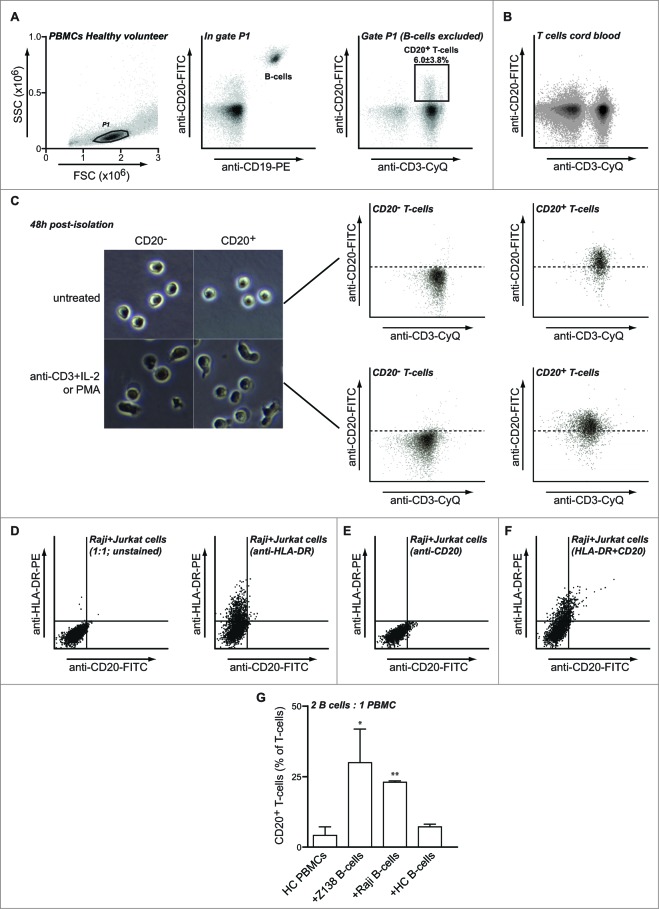Figure 1.
T cells can acquire CD20 upon co-culture with B cells. (A–B) Peripheral blood of healthy volunteers (A) or cord blood (B) was stained using anti-CD3-CyQ, anti-CD19-PE, and anti-CD20-FITC. Plots represent cells gated on FSC/SSC followed by exclusion of B-cells based on co-expression of CD19 and CD20. (C)PBMCs from healthy volunteers were stained using anti-CD3-CyQ, anti-CD19-PE and anti-CD20-FITC and CD20− and CD20+ T cell populations isolated using multicolor cell sorting. Isolated cells were left untreated or activated using a cocktail of anti-CD3 mAb and IL-2 for 48 h after which cells were examined for CD3 and CD20 expression. (D-F) Jurkat T cells were co-cultured with CD20+ B cell line Raji for 15 min and expression of HLA-DR (D), CD20 (E) or both (F) was assessed by flow cytometry on gated CD3+ T-cells. (G) PBMCs of healthy volunteers were incubated alone or in the presence of Z138, Raji or healthy control B cells at a ratio of 2–1 for 1h followed by flow cytometric analysis for CD20 expression within the CD3+ population. Asterisks represent significant changes compared to PBMCs alone.

